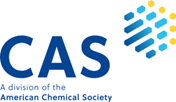Investigating diagnostic, Prognostic, and therapeutic role of Long Non-Coding RNA MALAT1 in Breast Carcinoma: in silico study
Role of Long Non-Coding RNA MALAT1 in Breast Carcinoma
DOI:
https://doi.org/10.69750/dmls.01.01.014Keywords:
Long Non-Coding RNA, Breast Carcinoma, Diagnostic Biomarker, Drug Repurposing, Survival Analysis, Protein-Protein Interactions, Immune Surveillance, Drug Repurposing.Abstract
Background: Metastasis-Associated Lung Adenocarcinoma Transcript 1 (MALAT1) is a nuclear-enriched long non-coding RNA, implicated in the tumorigenesis of various cancers, including breast carcinoma (BC). It is associated with cancer proliferation, invasion, migration, and metastasis, and plays a role in immune system modulation.
Aims and Objectives: This in silico study investigates MALAT1's diagnostic, prognostic, and therapeutic potential in BC. It examines MALAT1's differential expression in Breast Cancer (BC) versus normal tissues, its impact on patient survival, and its interaction with miR-561 affecting TOP2A mRNA degradation.
Methodology: Using publicly available datasets from GEO and TCGA, we conducted differential expression, survival, and prognostic analyses, along with network and pathway studies and drug repurposing analyzes and Tools like Graph Pad Prism and GEPIA data set was used for demographics.
Results: Our analyzes indicate overexpression of MALAT1 in BC tissues, its correlation with poorer survival rates, and involvement in key oncogenic pathways. Additionally, drug repurposing analyzes have identified potential MALAT1-targeted therapeutic strategies.
Conclusion: MALAT1 serves as a significant biomarker for BC diagnosis and prognosis and is identified as a potential therapeutic target. This study lays the groundwork for future research into MALAT1-targeted therapies in BC
Downloads
References
Amodio N, Raimondi L, Juli G, Stamato MA, Caracciolo D, Tagliaferri P, et al. MALAT1: a druggable long non-coding RNA for targeted anti-cancer approaches. Journal of hematology & oncology. 2018;11:1-19.
Goyal B, Yadav SRM, Awasthee N, Gupta S, Kunnumakkara AB, Gupta SC. Diagnostic, prognostic, and therapeutic significance of long non-coding RNA MALAT1 in cancer. Biochimica et Biophysica Acta (BBA)-Reviews on Cancer. 2021;1875(2):188502.
Toraih EA, El-Wazir A, Ageeli EA, Hussein MH, Eltoukhy MM, Killackey MT, et al. Unleash multifunctional role of long noncoding RNAs biomarker panel in breast cancer: a predictor classification model. Epigenomics. 2020;12(14):1215-37.
Sobhani N, Chahwan R, Roudi R, Morris R, Volinia S, Chai D, et al. Predictive and prognostic value of non-coding RNA in breast cancer. Cancers. 2022;14(12):2952.
Hajibabaei S, Nafissi N, Azimi Y, Mahdian R, Rahimi-Jamnani F, Valizadeh V, et al. Targeting long non-coding RNA MALAT1 reverses cancerous phenotypes of breast cancer cells through microRNA-561-3p/TOP2A axis. Scientific Reports. 2023;13(1):8652.
Poursheikhani A, Abbaszadegan MR, Nokhandani N, Kerachian MA. Integration analysis of long non-coding RNA (lncRNA) role in tumorigenesis of colon adenocarcinoma. BMC Medical Genomics. 2020;13:1-16.
Mekky RY, Ragab MF, Manie T, Attia AA, Youness RA. MALAT-1: Immunomodulatory lncRNA hampering the innate and the adaptive immune arms in triple negative breast cancer. Translational Oncology. 2023;31:101653.
Toraih EA, Ellawindy A, Fala SY, Al Ageeli E, Gouda NS, Fawzy MS, et al. Oncogenic long noncoding RNA MALAT1 and HCV-related hepatocellular carcinoma. Biomedicine & Pharmacotherapy. 2018;102:653-69.
Soliman R, Youness R, El-Shazly M, Handoussa H, Gad M. Regulatory interacting network between the immunomodulatory non-coding RNAs: miR-17-5p, MALAT1 and H19 lncRNAs in modulating the tumour microenvironment in TNBC. Annals of Oncology. 2019;30:xi57.
Wu Y, Huang C, Meng X, Li J. Long noncoding RNA MALAT1: insights into its biogenesis and implications in human disease. Current pharmaceutical design. 2015;21(34):5017-28.
Ali R, Laskar SA, Khan NJ, Wahab S, Khalid M. Non-coding RNA’s prevalence as biomarkers for prognostic, diagnostic, and clinical utility in breast cancer. Functional & Integrative Genomics. 2023;23(2):195.
Rahman MM, Hossain MT, Reza MS, Peng Y, Feng S, Wei Y. Identification of potential long non-coding rna candidates that contribute to triple-negative breast cancer in humans through computational approach. International Journal of Molecular Sciences. 2021;22(22):12359.
Pouyanrad S, Rahgozar S, Ghodousi ES. Dysregulation of miR-335-3p, targeted by NEAT1 and MALAT1 long non-coding RNAs, is associated with poor prognosis in childhood acute lymphoblastic leukemia. Gene. 2019;692:35-43.
Aftabi Y, Ansarin K, Shanehbandi D, Khalili M, Seyedrezazadeh E, Rahbarnia L, et al. Long non‐coding RNAs as potential biomarkers in the prognosis and diagnosis of lung cancer: A review and target analysis. IUBMB life. 2021;73(2):307-27.
Pavanelli AC, Mangone FR, Barros LR, Machado-Rugolo J, Capelozzi VL, Nagai MA. Abnormal long non-coding RNAs expression patterns have the potential ability for predicting survival and treatment response in breast cancer. Genes. 2021;12(7):996.
Barsoum FS, Awad AS, Hussein NH, Eissa RA, El Tayebi HM. MALAT-1: LncRNA ruling miR-182/PIG-C/mesothelin triad in triple negative breast cancer. Pathology-Research and Practice. 2020;216(12):153274.
Elmasri RA, Rashwan AA, Gaber SH, Rostom MM, Karousi P, Yasser MB, et al. Puzzling out the role of MIAT LncRNA in hepatocellular carcinoma. Non-coding RNA Research. 2024.
Mezher M, Abdallah S, Ashekyan O, Shoukari AA, Choubassy H, Kurdi A, et al. Insights on the biomarker potential of exosomal non-coding RNAs in colorectal cancer: an in silico characterization of related exosomal lncRNA/circRNA–miRNA–target Axis. Cells. 2023;12(7):1081.
Das S, Jahan N, Mal C. In-silico Identification of lncRNA Functionality in Cancers Related to Obesity. International Journal of BioSciences & Technology. 2020;13(3).
Shaath H, Vishnubalaji R, Elango R, Kardousha A, Islam Z, Qureshi R, et al., editors. Long non-coding RNA and RNA-binding protein interactions in cancer: Experimental and machine learning approaches. Seminars in Cancer Biology; 2022: Elsevier.
Shahrzad MK, Gharehgozlou R, Fadaei S, Hajian P, Mirzaei HR. Vitamin D and non-coding RNAs: new insights into the regulation of breast cancer. Current Molecular Medicine. 2021;21(3):194-210.
Le P, Romano G, Nana-Sinkam P, Acunzo M. Non-coding RNAs in cancer diagnosis and therapy: focus on lung cancer. Cancers. 2021;13(6):1372.
Samir A, Tawab RA, El Tayebi HM. Long non‑coding RNAs XIST and MALAT1 hijack the PD‑L1 regulatory signaling pathway in breast cancer subtypes. Oncology Letters. 2021;22(2):1-12.
Aprile M, Costa V, Cimmino A, Calin GA. Emerging role of oncogenic long noncoding RNA as cancer biomarkers. International journal of cancer. 2023;152(5):822-34.






















